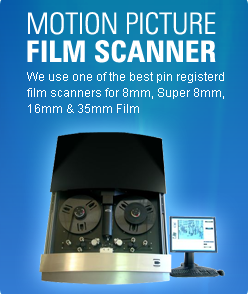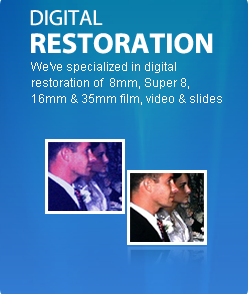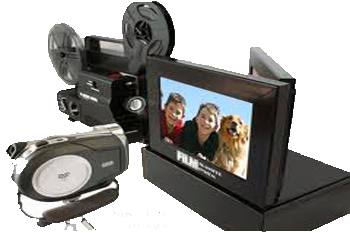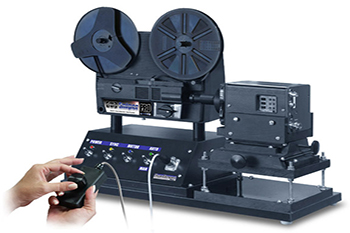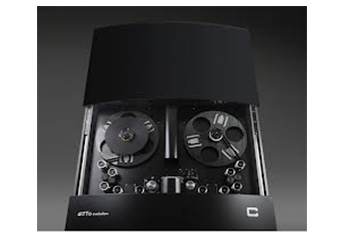
Film Conversion Equipment
Film Scanning and Film Transfer Equipment Types
The type of film scanning machine used for your 8mm, Super 8 or 16mm film conversion will have as much of an impact on the quality you receive as the resolution of the scan itself will. For example, if you wanted to digitize a photograph and tried doing it two different ways. You first put the photograph down on a table and took a picture of it using your smart phone or camera. Then you took the picture and scanned it using a flatbed scanner. If you compare the two side by side on your computer it will become really obvious that the flatbed scanner produced a digital image as good as the photograph. However, the picture you took with your phone or camera does not look close to the quality of the original photograph.
The same goes for scanning your 8mm, Super 8 or 16mm film. The real-time and frame by frame machines below are using a camcorder to take a picture of your film. The motion picture film scanner and Datacine machine are scanning the film. The results will be significantly different.
Film Conversion Equipment |
|
Real Time
|
|
Frame by Frame
|
|
Professional Film Scanners
|
|
Equally important as resolution is the type of film transfer. There are a few basic types of film transfer processes. More than 80% of the companies out there today use a real-time transfer. Any type of real-time film transfer will result in video that is 40-50% worse than the film’s current condition.
So, at this point you’ve learned that film transfers can capture at standard definition (480 lines), high definition (1080 lines) or 2K (1556 lines). You’ve also learned about the 3 different types of film transfers being used today. In order from least to best quality we have:
The film transfer processes above are the basics types and do not include any restoration by themselves. Restoration comes in many different capabilities from color and exposure correction, to grain elimination, to stabilization
Green Bay Fun Facts: Green Bay today stands as a progressive, modern city with a thriving, diversified economy. Its economy is still primarily driven by the paper product industry, with transportation and health care also significant employers. Green Bay is a city located at the mouth of the Fox River in Wisconsin. Serving as the county seat of Brown County, Green Bay is situated 112 miles north of Milwaukee to which it is connected by Interstate I-43.
Wisconsin Fun Facts: Wisconsin became aU.S. territoryfollowing the American Revolution and soon after began attracting settlers looking for work inits mining, lumber and dairy industries. It was admitted to the union as the 30th state in 1848.In the years leading up to the Civil War,Wisconsin was an important stop on the Underground Railroad, with manyslaves passing through the state on their way to freedom in Canada. Today, Wisconsin leads the nation in dairy production and is known for the quality of its cheddar cheese–residents even sometimesrefer to themselves as “cheeseheads.” Famous Wisconsinites include architect Frank Lloyd Wright, magician Harry Houdini andU.S.
